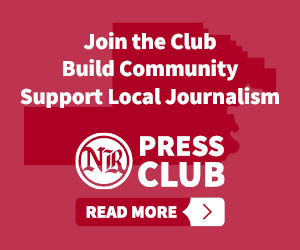Bond right-sized for Mac, deserves support at polls
We have but one issue before us on ballots mailed to us this week in connection with Oregon’s Nov. 4 general election.
The question is: Can our community afford to spend $72.5 million on a new combination aquatic and community center, supplemented with $26 million in upgrades to its existing parks, library, senior center and outdoor recreation amenities?
For us, the short answer: We don’t think it can afford not to.
This is a proud community with a long history of saying “yes, we can,” not “no, we can’t.” That’s what gives it such a high livability quotient.
Time and time again over its storied past, it has risen to the occasion, often against long odds. And we think it can do so again.
Thanks to a complicated web of circumstances, we find ourselves today with:
- A community center having made do for almost half a century in the tired bones of a former armory erected more than a century ago.
- An aquatic center dating back seven decades and last renovated almost four decades ago.
- A 113-year-old Carnegie library featuring a series of patchwork expansions, the most recent major one coming 43 years ago.
- A 30-year-old senior center due for some updating to enhance and extend its useful life.
- A vibrant, extensive, high-use parks system that demands some refurbishing every 10 years or so to keep up with ever-changing and ever-expanding community needs.
Our community and aquatic center facilities are hopelessly run-down and outdated. According to consultant studies, it would cost very nearly as much to renovate them for continued makeshift use, despite their manifest inadequacies, than to replace them with a state-of-the art center capable of providing quality service for future decades.
The resulting package initially came in at $152.5 million.
The backers could have pushed ahead at that level, resisting pressure to give ground unless and until voters forced them into a second attempt. But give them credit. They chose the wiser option, exhibiting good faith with the community by doing the trimming up front.
And they didn’t settle for token cuts. Trying to make it as politically palatable to taxpayers as possible, they excised more than $50 million. That makes this package about as lean as it can get without eliminating one of the major elements altogether.
Are we setting our sights too high here? We think not, not by a long stretch. For comparative purposes, we need look no further than Newberg, our smaller sister city up the road.
Newberg has been relying on a separate taxing district, Chehalem Park & Recreation, since the late 1960s. The district operates an aquatic and fitness center, community center, cultural center, youth center, senior center, extensive park system, extensive trail system, dog park, preschool and other amenities.
Its parks and recreation facilities include an 18-hole golf course, set of pickleball courts, disc golf facility, BMX track, set of skate parks, array of soccer, baseball and softball fields, and menu of programs in arts, crafts, music, aquatics, fitness and such.
The district passed a bond to build its first full-fledged aquatic center in 1970, two years after McMinnville’s opened, and replaced it with a new, $20 million center in 2018, adding a fitness center component the following year. The new center features key elements McMinnville is looking for — a competition pool, recreational pool, water slide and lazy river feature, along with little lagoon, vortex, hot tub, sauna, patio and diving tank features.
Chamber President John Olson raised another issue last week in a piece delivering a resounding call for passage of the bond — the fact that attracting new family-wage employers and retaining old ones is highly competitive, and a community’s quality of life component plays a significant role.
He said, “Families and young professionals want to live in communities supporting wellness, recreation and opportunities to connect. By consolidating two outdated facilities into one modern recreation center, the city will provide a cost-effective, sustainable hub for health, wellness, and community life. For local employers, this means a stronger ability to recruit and retain skilled talent, keeping McMinnville competitive for years to come.”
Yes, there is a cost. There is always a cost. But it is one neighboring communities like Newberg are stepping up to shoulder, and we can, too.
Passage would add 95 cents per thousand dollars of assessed valuation to our current bond repayment burden, pushing it to $1.79, and keep it at the higher level through the 21-year life of the ensuing bonds.
The median assessed value for single-family homes in McMinnville is about $230,000, generally about half of true market value. That translates to about $18 a month in additional outlay.
The Voters’ Pamphlet features eight pages of statements in support, all from local civic leaders and community mainstays. It features just one statement in opposition — that of the Taxpayers Association of Oregon, a Portland Metro outfit founded by anti-tax crusaders Don McIntire and Jason Williams.
The association claims such tax outlays should be limited to “essential city services,” not “luxuries” like pools and recreation centers. We counter by arguing it should be up to local voters to decide the extent and level of local services on their own, unswayed by outsiders with outside agendas.
McMinnville deserves this investment in replacement of core facilities now long past their useful lives. It’s an investment in a legacy for the future — one in which we can take as much pride as our predecessors did in the legacy they left us.









Comments